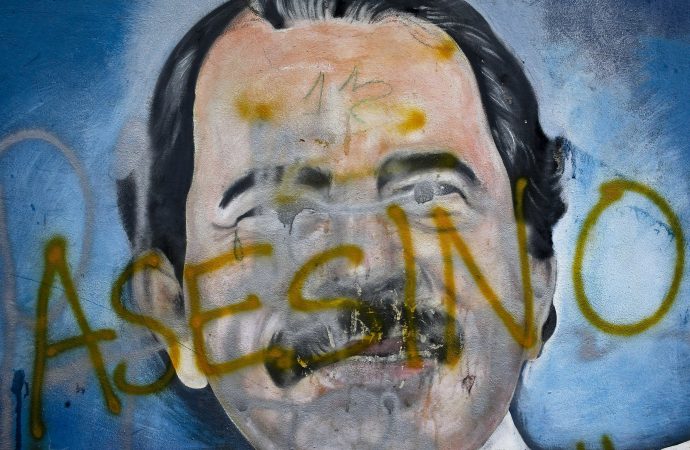JINOTEGA, Nicaragua - In Nicaragua, some bishops can be in hot water because they opened the doors of local churches to people wounded by the military, so they could be treated by doctors who themselves are being sent to prison for “aiding and abetting” a coup.
That’s the case of Jinotega, but the situation is similar in every diocese around the country since a civil uprising in April. The protests were mostly peaceful, but local police, military, and paramilitary forces violently countered them.
Members of the local Church are afraid to speak because they’ve been threatened by the police and because they’ve been targeted by a Facebook group called “Coup organizers of Jinotega,” in which pictures of the bishop or the vicar general are accompanied with the hashtag plomo, a threat that could be translated into “bullet.”
For instance, there’s a message dated Oct. 18, with a picture of the vicar general, saying that the “cassock-wearers of the Catholic Church in Jinotega continue to meet with the golpistas, the terrorists who led the different criminal actions in the region. Now they have their meetings in the Caritas of Jinotega, with the pretext of feeding the lovers of the delinquents who are on the run.”
Thousands of people in Nicaragua today are hiding in the mountains, running away from the pro-government forces that come at night and take them from their homes or kill them on the spot, no questions asked.
Some pro-government voices argue that those in hiding are part of a guerrilla movement, a remnant of the “Contras” who fought Ortega during a bloody civil war in the 1980s. Yet at least a half-dozen priests consulted by Crux, and a similar number of lay people, say there’s little to no basis for that assertion.
Only one, in the rural community of Wiwili, two hours by car on an unpaved road from Jinotega, admitted that there are some campesinos who still have the weapons they had in the 1980s, but even he sees the theory of a forming militia as a far-fetched idea.
“At most, you can talk of a group of people who, in a moment of despair, dug up their three-decade-old weapons to defend themselves,” he said. “No one today in the international community is worried about Nicaragua, there’s no U.S. general training the opposition with weapons smuggled through Honduras.”
No priest or bishop has yet been killed, though several have come under fire and been verbally threatened, something Crux was a witness to on several occasions during a Nov. 16-28 trip to the Central American country ruled by Daniel Ortega and his wife, Rosario Murillo.
A famous Nicaraguan poet and former priest, Ernesto Cardenal, who was a member of the Sandinista party during Ortega’s first government in the 1980s, serving as the country’s minister of culture, defined Murillo in his biography as a “sinister woman,” and many see her as the brains behind the current operation.
Though there are differing opinions regarding how they’ve maintained their power, shrewdness or simple perseverance, Murillo is a woman who knows how to play to the crowds and who understands how to exploit Nicaragua’s popular piety.
Murillo freely uses religious language, and, in an attempt to be “inclusive,” she even changes the way she refers to God despite the fact that both she and her husband claim to be Catholics.
As a priest put it Nov. 27, “in the morning God is Jehovah, in the afternoon Buddha and at night Allah, only to be Jesus Christ the following day.”
In the Diocese of Jinotega, an estimated 25 people were killed by the government in June, the worst period of the current crisis in the city. The Church had to help parents of the dead arrange for a casket, because most families were too poor to afford one. The doors of the cathedral were originally opened to treat the wounded, but due to its vicinity to City Hall, the improvised treatment center had to move to a different location.
Since then, many more have been killed or simply disappeared - five in the days just before Crux’s visit to the diocese with a group of workers from the papal charitable agency Aid to the Church in Need.
One of the drivers who took the group around was targeted by the police, and a local priest took him under his wing, putting him constantly on the move so that they couldn’t find him. The young man, who’s 26, acknowledged participating in the protests, but insisted those he witnessed were all peaceful until the army came and shot at them.
People today are afraid to go to church, and the local bishop, Enrique Herrera Gutierrez, cannot leave his house unaccompanied.
The local church, he said, worked in a “neutral way,” helping those on both sides. But much like in the rest of Nicaragua, he said the number of wounded was larger on the side of the protestors, which meant the assistance was uneven.
Herrera leads a diocese that has 17 parishes and over 750 rural communities, tended to by 27 priests, both diocesan and religious. The department of Jinotega, and the diocese, had a population of 452,973 inhabitants in 2017 and has an area of 38,326 square miles. There’s just one catholic priest for every 17,000 people.
A priest who was with the bishop, but who requested not to be named, said there are small pro-government groups targeting those who were in the protest, and the government is having them killed or imprisoned.
Many end up in Chipote, an infamous prison on the outskirts of Managua, where men and women reportedly are tortured, raped and live in sub-human conditions. In addition, the government at times refuses to acknowledge when they’ve taken someone prisoner, so parents are left wondering if their children are in jail or have already been killed, their bodies perhaps never to be recovered.

